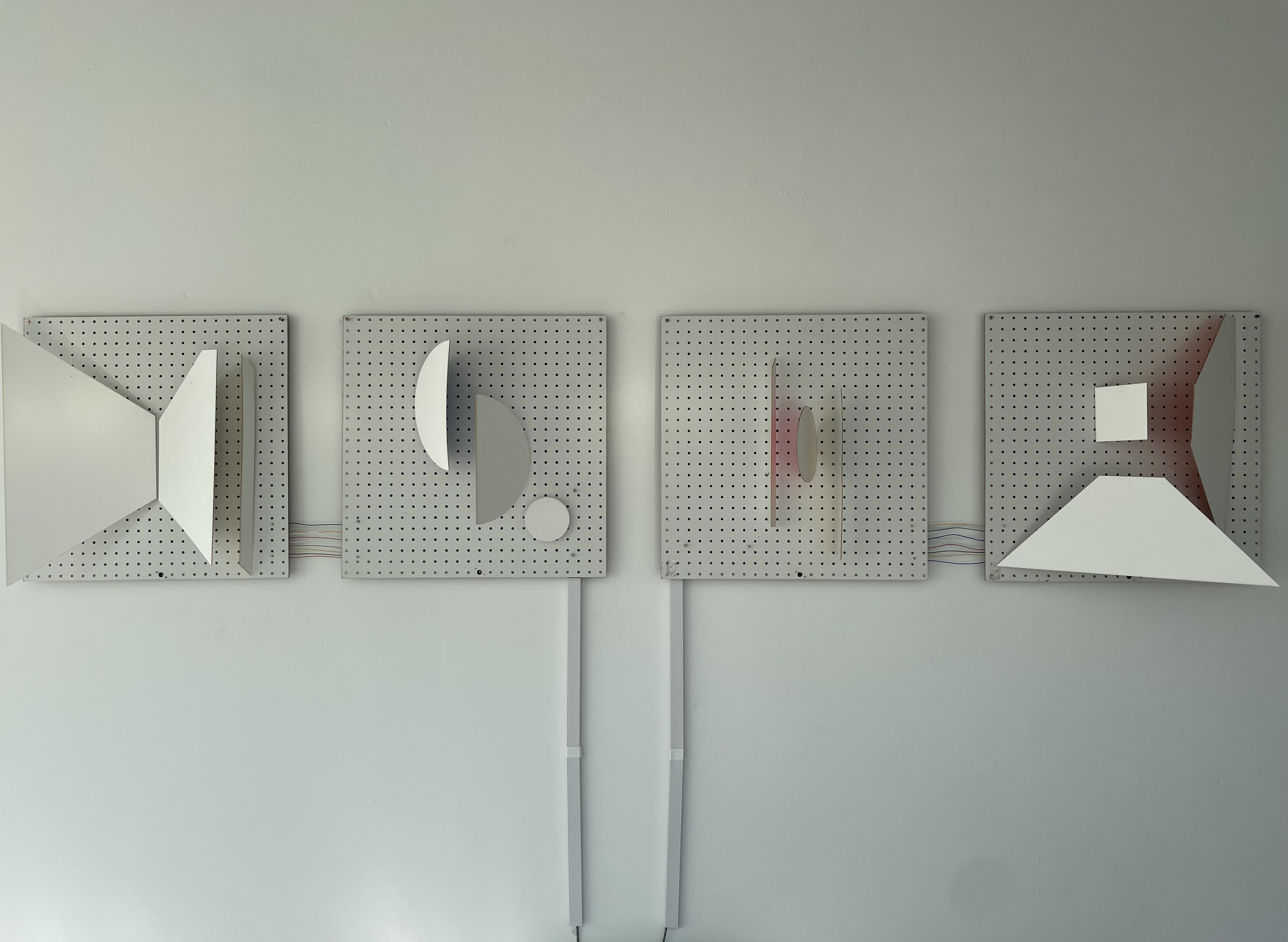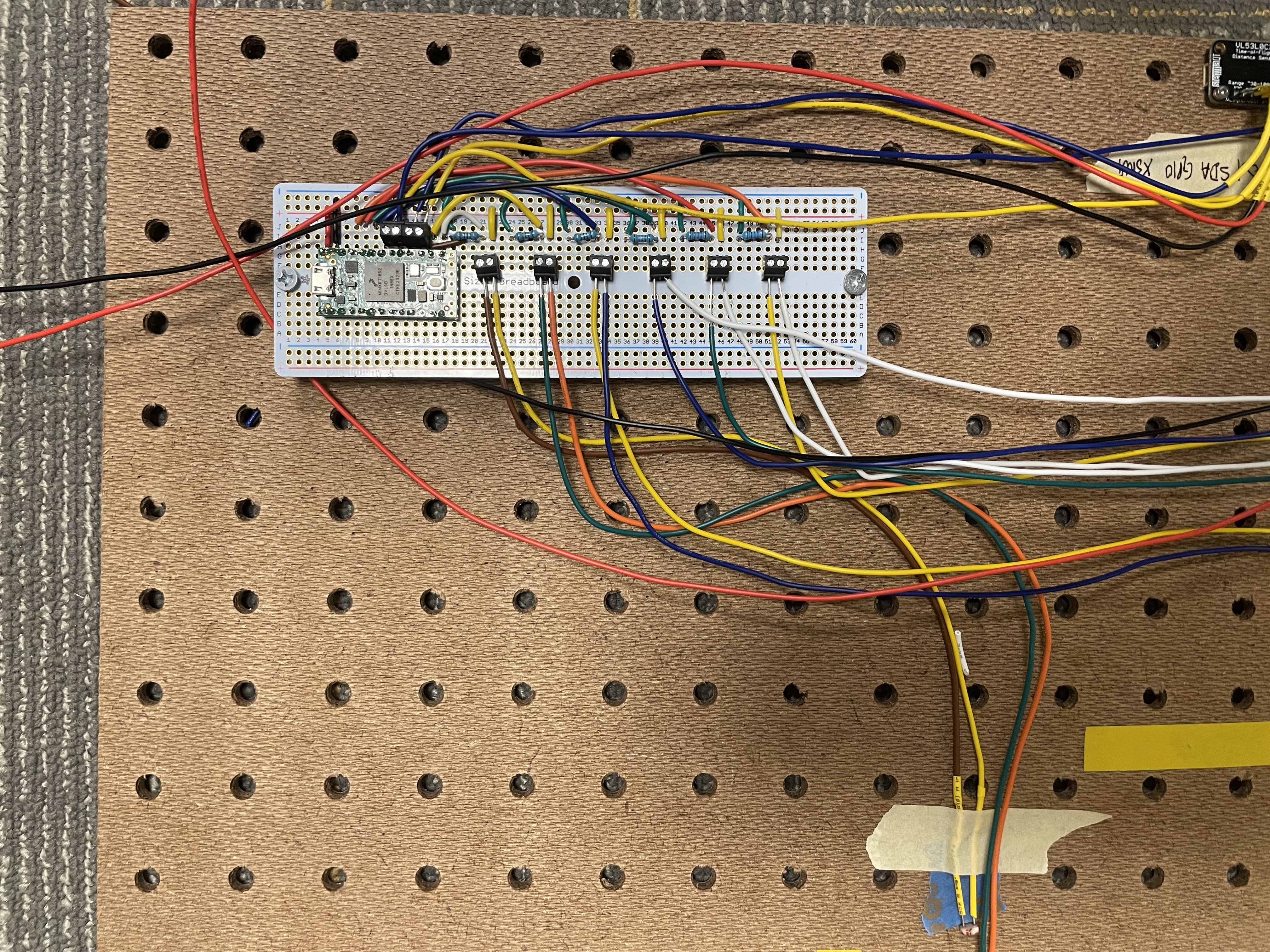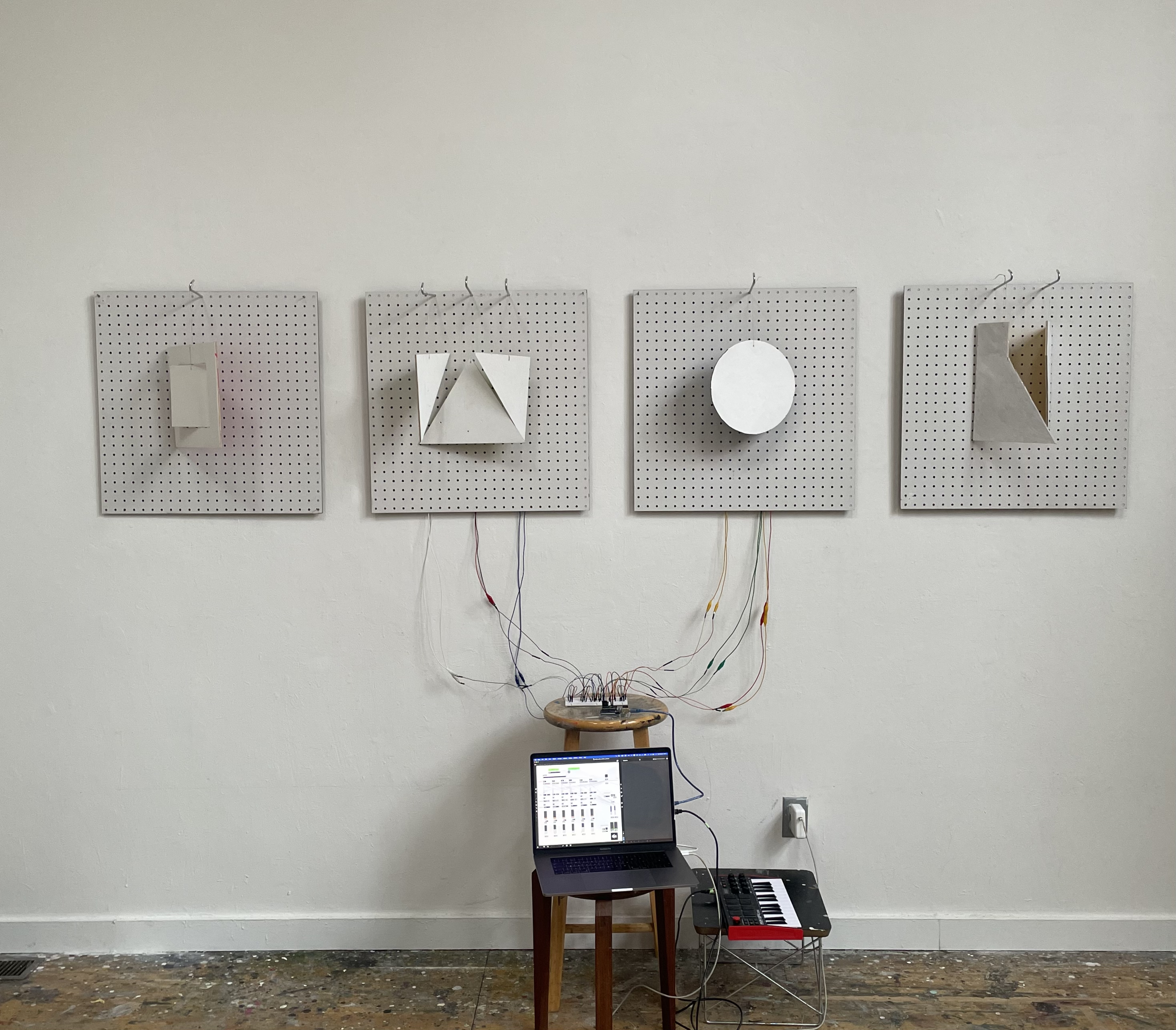Tracing Sound and Light
Sound installation
Exhibited at the Nearburg Gallery of BVAC, Hanover (NH), 2025
Video documentation of Tracing Sound and Light.
[ ARTICLE about the research I did on the Bauhaus, in Germany. ]
“Tracing sound and light" is a project that mixes visual arts, sound, and architecture. The project draws inspiration from the houses built by Mexican architect Luis Barragán, focusing on the ineffable qualities of a promenade inside his carefully thought-out spaces. These inherent qualities in the architecture of Barragán were of particular interest to me: the use of everyday materials, a sense of calm and serenity, an elegant selection of colors, and a timeless sense of connection with the divine. How to approach music composition with these materials?
I set out to trace geometric abstractions of his architecture on the harmonic space (a tridimensional grid representing partials of the harmonic spectrum), and in this way, I devised my own tuning. I crafted a musical scale that derives tones from a lattice envisioned by David B. Doty. This allows me to engage with geometric shapes in a musical dimension, shaped by multiples of the prime number 7.
Furthermore, I cut out these shapes out of paper, and hung them in front of light sensors fixed to pegboards on the wall. That way, these simple materials will be serenely sensing sunlight and activating sound every time the light cuts through. In this manner, the composition reaches out to ineffable territories by means of a virtual/intellectual harmonic space, brought into being in the physical space via an interaction of light and shadow in time.
This work could not have been possible without the generous support of the Hopkins Center for the Arts, and my collaborators: Emily Hass (visual artist), Beccy Abraham (technical and production assistant), and Ivy Fu (problem solver).

I devised several tuning systems by ploting simple geometric shapes onto a harmonic lattice, and then interpolating them within an octave range. These notes are then played by a wavetable synthesizer.

Paper mobiles control de amount of light that is registered by photocell sensors, and activate the synthesizer in the computer. The instrument's output is the spatialized in quadraphonic sound. Beccy Abraham provided instrumental support and guidance in the coding and engineering stages of the project. Thanks Beccy!


The preliminary stages of this work were developed in collaboration wih Emily Hass whilst in residency at the Josef and Anni Albers foundation, in January 2025. Big shoutout to Emily and the generous team at the Albers Foundation!